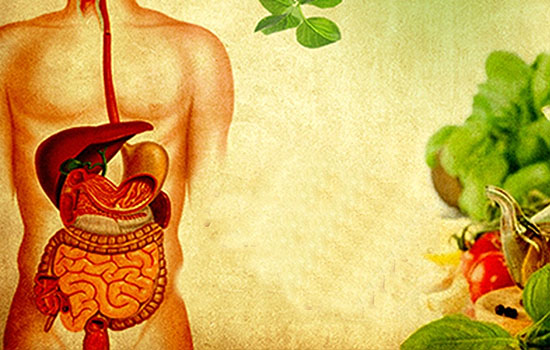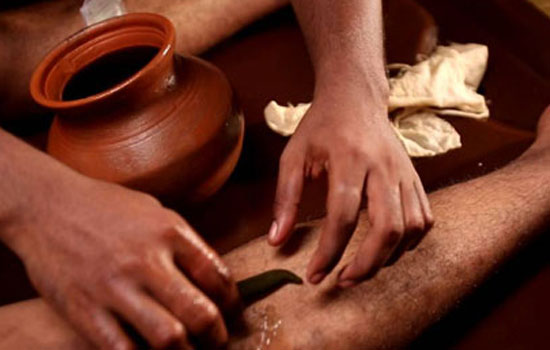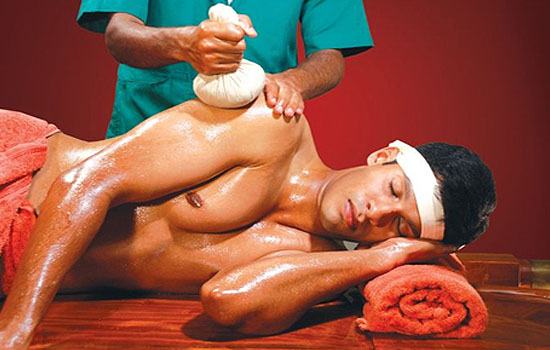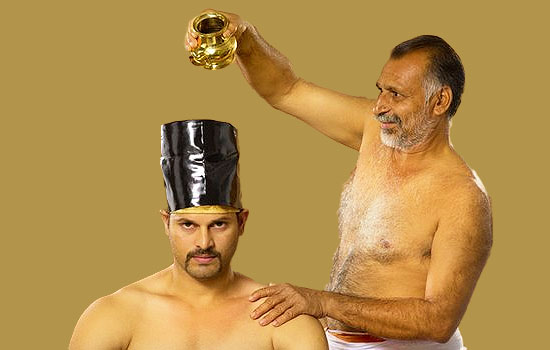
Call Now
+91 8848646623
Ayurveda is an age-old science that uses body intelligence, seasonal wisdom, and nature’s cure by way of Panchakarma to balance and detoxify the body. It is designed to restore the degenerative process of the human body, holding within it the potential of long-lasting wellness. Ayurveda and panchakarma focuses on correcting the lifestyle so that the problems do not reoccur. Apart from correcting lifestyle, Ayurveda has a wide range of medications for all major types of ailments. The treatments are discussed in length in ancient Ayurvedic treatise such as Charaka Samhita.
Panchakarma is a Sanskrit word that literally means “five actions” or “five treatments”. It is a means of flushing ama or toxins out of the body, thereby cleansing and rejuvenating the body and mind. It uses five methods or therapies that are guaranteed to detoxify the body.
Panchakarma consists of -
These therapies are known as Pradhan Karma, meaning main procedures. Snehana (oleation/massage) and Swedana (steam) are associated procedures which should be done before pradhana karmas and are so called Purva karma. Purva karma is a preparatory stage for the main procedures, it brings the aggravated doshas in koshtha for their elimination.
Vitiated Doshas are always located in the body parts where the disease is produced. All Doshas are to be collected into the koshtha from where they are eliminated through Panchakarma, for collecting all Doshas(toxins) in the alimentary canal Snehana (oleation therapy) and Swedana (sweating therapy) are done. Both the therapies Snehana and Swedana play an important role not only as Purvakarma but also works as a line by preparatory measures. Before, the actual procedure of purification/detoxification begins, there is a great need to prepare the body for the required methods to encourage it to let go of the toxins. So, there are five procedures of Purvakarma Ayurveda.
The two Purva karmas.
1) Snehana:
Snehana or Oleation therapy helps in loosening the body toxins which are stuck up into our body systems causing ailments. Oleation is of two types internal and external oleation, where in Internal Oleation Sneha dravya like plain or medicated ghee, oil is taken orally in desirable amount. External Oleation therapy consists of whole or partial body massage with medicated oils. Our skin being semi-permeable absorbs this oil to some extent.
2) Swedana:
Swedana or Sudation therapy is sweating induced by steam, it liquifies the toxins and increases the flow of toxins to Gastrointestinal tract (Koshtha). There are various ways of applying Swedana therapy like Nadi sweda, Pinda sweda, Patra pottali, Valuka sweda, etc the type of sweda to be used is selected according to the patient and the disease he is suffering from.

1. Vamana (Therapeutic Emesis):
This process is also known as Emesis Therapy, or in easy words, vomiting. This is majorly used for patients suffering from deranged Kapha accumulated in Respiratory tract, Sinuses, Bronchial asthma, Psoriasis, Chronic Allergies, Obesity, Chronic Indigestion, Hyperacidity, Nasal Congestion and other skin disorders. The patient is advised to drink a decoction of liquorice, or Acorus calamus root, or sugarcane juice – as per his body constitution and ailment he is suffering from – to the full extent and emesis is induced. Minimum 4-6 bouts of vomit indicate excellent purification.

2. Virechan (Therapeutic Purgation):
Virechan is given to patients suffering from Pitta dosha related diseases. It cleanses the gastrointestinal tract thoroughly and voids off the Pitta toxins accumulated in the liver, gallbladder and small intestine. Purgation is given with medicines like Cow’s milk, Black currants, castor oil; etc. It is a safe procedure without side effects. Virechana helps to cure Chronic Fever, Diabetes, Asthma, Skin disorders such as Herpes, Paraplegia, Hemiplegia, Joint disorders, Digestive disorders and Constipation, Hyperacidity, Vitiligo, Psoriasis, Headaches, Elephantiasis and Gynaecological disorders.

3. Basti (Enema):
Basti is considered to be the most effective treatment in Ayurveda as it not only prime cure for Vata disorders but also cleanses toxins created by pitta and kapha through rectum. Medicated oil, ghee or decoction is introduced through the anus into the colon.
Basti is an effective therapy in osteoporosis, gas trouble, constipation, backache, hemiplegia, paraplegia, sciatica, cervical spondylosis, chronic fever, arthritis, muscle spasm, acidity, digestive disorders, joint pain, slip disc, sexual disorders etc and other ailments caused due to imbalance of vata dosha. The large intestine and bones are the main seat of vata, so Basti is administered through rectum which removes toxins and also nourishes the membrane of the colon and controls vata diseases efficiently.

4. Nasya (Nasal drops):
Medicine instilled into the nose is known as Nasya. It acts on doshas accumulated in head, neck and face region, especially kapha dosha. It drains out sinus, relieves headache, improves eyesight, memory and promotes hair growth. Nasal allergies, polyps, neck stiffness, frozen shoulder, Bell’s palsy can be well treated by Nasya. In cases of Hemiplegia and Paraplegia, it stimulates brain tissues and improves the functioning of the nervous system.

5. Raktamokshan (Blood-letting):
Raktamokshan is a unique procedure specially performed in disease due to Pitta and Rakta dushti. Raktamokshan is carried out in various ways but the most common techniques used are the application of Leeches and bloodletting with a syringe.
Leeches suck impure blood from our body and are usually helpful in localized area. It reduces pain and swelling in joint pain, localized skin diseases, cracked heels, varicose veins, etc. Blood-letting through a syringe is effective in generalized body ailments like Hypertension, Large area of Varicose veins, Vitiligo, severe Headache etc.

o Udwarthanam
Udwarthanam means to elevate or to promote. Is a special therapeutic deep tissue massage using herbal powders. This massage involves upward stroking, where the powder is rubbed forcibly on the body. The body is coated with warm medicated oil and then a herbal powder mix is massaged into the body to break up stagnation & stimulate lymphatic flow.
After this treatment, a herbalised steam is given at a specific temperature that helps to open the channels and flush the toxins from the body.

o Shirodhara
Shirodhara is a classical and a well-established ayurvedic procedure of slowly and steadily dripping medicated oil or other liquids on the forehead. This procedure induces a relaxed state of awareness that results in a dynamic psycho-somatic balance.

o Ella Kizhi
An ancient Ayurvedic sudation therapy using numerous medicinal leaves (herbs). It induces perspiration within the affected area, which prompts the skin to eliminate wastes. Fresh leaves (Ela) having vata pacifying properties make the herbal kizhis (bundles). These kizhis, dipped into warm Ayurvedic oils, will be used for massaging the body.

o Podi Kizhi
One of the most common and effective Ayurvedic therapy involving full body massage (or the affected part) using kizhis (cotton boluses) with a mixture of 12 herbs, dipped in medicated oils. It is effective in treating neuro-muscular diseases, binging back the natural body balance.

o Nyavara Kizhi
A distinct Ayurvedic massage using Njavara (Shashtika Shali) or cooked rice mixed with milk and herbal extract of Kurumthotti (Sida Rhombifolia) tied in cotton boluses called as kizhis. The kizhis dipped in medicated Ayurvedic oils will be applied all over the body or a specific part of the body to induce sudation (perspiration).

o Shirobasti
Shiro Basti treatment is warm oil poured onto the head, and then allowed to remain there for a certain period of time and then followed by shiro abhyanga (head massage). Beneficial for the treatment of depression, headaches, insomnia and psychological disorders.

o Katibasti
Kati Basti (Vasti) is a traditional Ayurvedic treatment used for lower backache and disorders of lumbosacral region, including slip disc, lumbar spondylosis, sciatica, spinal problems etc. Kati Vasti is a part of external oleation (Snehana) therapy in Ayurveda. It is very safe, non-invasive and green category procedure

o Janubasti
The knee joint is called Janu Sandhi in Sanskrit; hence the name Janu Basti is given to the procedure done on knee joints. In this the knee joint is bathed with warm medicated oil or freshly prepared herbal decoction. Depending on the condition it can be practiced over both the knee joints or on one knee joint.

o Netra tarpan
A special Ayurvedic treatment for the eyes. Freshly made dough rings filled with fragrant oils are placed around the eyes, sterilized cows’ ghee (a clear butter-like liquid) is gently poured onto the eyes while they are kept open. It is very effective at treating eye diseases and poor or blurred vision.

o Karnapurana
Karna Purana is an Ayurvedic therapy wherein the ears are filled with Herbo-mineral oils that lubricate the delicate filaments of the ear canal, remove impurities, and improve hearing capacity. Karna means “ear” and Purana denotes “filling” or “pouring”.

o Pizicchil
Pizhichil is a very excellent detox therapy. It involves applying of warm medicated Ayurvedic oils over the whole body, followed with a gentle, nourishing and rejuvenating massage. The massage induces profound perspiration, eliminating toxins from the body.